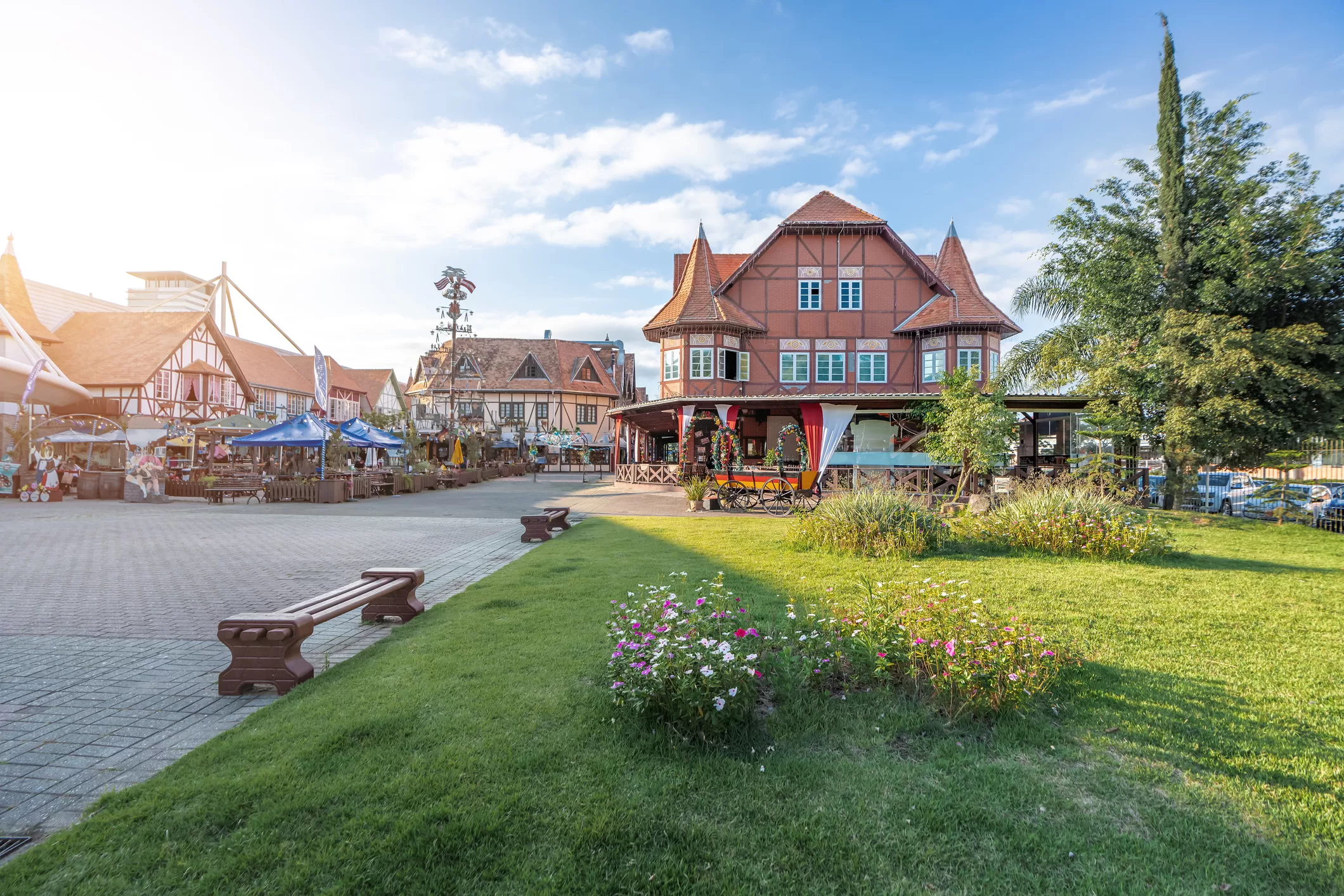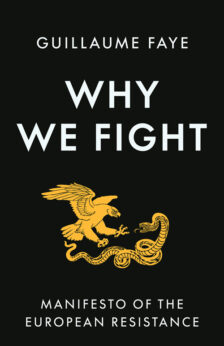Two centuries after Hegel wrote down his thoughts on the Americas, much of the world, especially in the West, still shares these, though unwittingly, I am sure. According to Hegel, Europe had history, the Americas only geography. Actually, he might have had a point since Henry Ford seemed to agree when he said that “history is bunk.” The eagerness with which Francis Fukuyama later declared that history had ended entirely fits into the ahistorical mindset that indeed appears to be part and parcel of the US cultural and intellectual climate. While Hegel went on to state that (North) America was the land of the future, he considered Latin America to be forever destined to be a bastion of backwardness.
Many in what is increasingly being called “the collective West” – essentially the US Empire, consisting of the US, the Anglosphere, NATO, the EU, Japan and South Korea – regard Latin America as a colorful, picturesque but rather disorderly extension of the US Empire. Few realize that Latin America is more than just geography. After Latin America in the 1950s was declared to be part of the “Third World,” its position as a mere geographical expression seemed confirmed – certainly in a world where the English language has become so dominant. It is generally not known that the term “Third World” is a translation of the French expression tiers-monde, which was derived from tiers état, or third estate, the class of peasants and city residents that made the French Revolution. In other words, “Third World” refers to those parts of the world that were colonized by Western powers. As we all know, its emancipation is still far from complete, certainly since the US has long been trying (with varying success) to take over the dominant position of European powers in their former colonies.
In a recent interview on RT, Alexander Dugin referred to this situation when he said that states in the “Global South,” the new name for “Third World,” were on the verge of becoming part of the multipolar world. This particular new world order, explained Dugin, will only take form in the wake of the imminent Russian victory in the Ukraine.
This victory also promises to be the nail in the coffin of Europe. Before our very eyes, Europe is being destroyed upon orders from the US regime in Washington. The US overlords have been busy trying to take apart Germany, and with their destruction of the Nord Stream pipeline and the imposition of costly US LNG at the expense of cheap, reliable natural gas from Russia, they are trying to force German industry to relocate to the US. While Europe’s economic powerhouse Germany is being dismantled, everywhere else in Europe, “Greens” and other US shills are busy destroying civil society by undermining the family and basic human values such as trust, solidarity, reliability and a sense of humor. These and other values are essential for the resilience and survival of any society, but in order for the US to further consolidate its suffocating hold on Europe, normal society must be destroyed. The US has bands of obedient thugs doing its dirty work. These are the members of the various Green parties and parties like them, such as D66 in the Netherlands, antifa, and the hundreds of organizations clamoring for special privileges for the sexually deviant. So far, the operation has been very successful since civil society seems on the verge of collapse all over Europe.
At this saddening juncture, it might do well to take a look at Latin America, traditionally despised by so many Europeans, who can look no further than the immediately obvious, such as the architectural vestiges of ancient Amerindian civilizations, quaint and colorful Indian markets and Carnival in Rio de Janeiro.
However, few realize there are quite a few parts of Latin America that are thoroughly European in outlook and culture. The biggest of these is the River Plate region, comprising much of Argentina, all of Uruguay and the three southernmost states of Brazil (Santa Catarina, Paraná and Rio Grande do Sul), with a total area of about two million square kilometers and a population of almost sixty million. From 1870 to 1950, at least twelve million European immigrants settled there. They came from Italy (4.5 million), Spain (2.5 million), Portugal (two million), France (half a million), Germany (half a million), Poland (almost half a million), Russia (300,000), Austria and Hungary. Most immigrants were Roman Catholics, some were Jewish, and a tiny fraction were Protestants. With about eighty percent hailing from Latin Europe, it is hardly surprising that they easily adapted to the local varieties of Spanish and Portuguese already being spoken in the area. Around 1900, when in Italy itself only a small minority would normally speak Italian instead of their local dialect, the Italian language was prominent in the River Plate since the immigrants from Italy preferred it to communicate with other Italians. The Germans, Poles and small groups of Welshmen, Danes and Dutchmen tended to settle together and thus established villages and small towns where they could continue to speak their own languages.
The massive influx of Europeans completely transformed what in the mid-19th century was still a land of plains, steppes, savannas and forests. For one, the population was whitened. The sizable contingents of blacks (Buenos Aires was at least one-third black in 1810) largely disappeared through miscegenation. Indians disappeared in the same way and were pushed toward the interior. At the same time, a European way of life – rooted in the traditions of Italy, Spain, Portugal and France – was established everywhere. Given the presence of small minorities of Jews and immigrants from Syria and the Lebanon, this brought the great Argentinian historian José Luis Romero to observe that the River Plate actually resembled the Mediterranean at the peak of the Roman Empire, with the main difference that now Spanish had replaced Latin as the general language.
The Platine Region is so profoundly European in all details of life that it may bring some to despair. A few years ago, an Italian friend of mine, an architect from Rome, was so sick and tired of city life in Italy that he decided to go live in some exotic place. He went to Buenos Aires but left in disillusion after a few weeks. When going about town, he found it depressing to see exactly the same faces, hear the same voices and have the same conversations (though in Spanish) as in Rome. Indeed, objectively, the wider Platine Region and its great cities of Buenos Aires, La Plata, Mar del Plata, Montevideo, Rosario, Porto Alegre and Curitiba are just like Europe.
One characteristic that I believe is an essential element of the European mindset, especially in the southern parts of Europe, is an irreverent sense of humor, which expresses itself in a tendency to make jokes about anything and anybody. One example would be the use of funny nicknames for public figures as soon as these gain a certain level of prominence. Another is that in families or among friends, just about everyone is given a nickname on the basis of an obvious characteristic, such as hair color, body length or national origin. For example, in Argentina, a blonde woman might be called rubia (“blondie”), and a tall person either “shorty” (petizo) or “broomstick (palito). By the same token, a blond man might be called “darkie” (negro). Essentially, this tendency reflects a deeply ingrained attitude that no one should be taken too seriously and that, in a fundamental sense, all people are equal.
It is precisely this way of thinking that is being shunned officially, canceled or even outlawed in Europe today as a result of concepts originating in the Frankfurt School, such as LGBT lunacy, diversity, inclusion and equity. The explanation for such differences between the old and the new Europe is actually political, not cultural. Although Latin America and Europe have been under the American boot for a long time, the US impact on Europe has been stronger. This is the result of the US intervention in the First World War, followed by the US occupation of Europe that began with the military conquest in 1943. It seems Europeans have tended to look up to Americans, while Latin Americans, especially those in South America, see US Americans, if not as inferior, at least as equals. This attitude was best put in words by the Italian-Argentinian artist Piero in his song Los americanos, which has become a classic in Latin American popular culture.
(Part of the humor is that in Argentina, Americans are called “Americans” ironically. Most Argentinians refer to them as yanquis)
They are born old, and they become older
as they go through life, those Americans.
They are born convinced that nobody in the world
is more important than the Americans
For them, Napoleon was an Italian gentleman, who operated
without the Americans,
and they are convinced he would not have lost at
Waterloo with the help of the Americans.
If they know history, it is not because they read about it,
but because they saw it in American movies,
with their grand scenes and great music,
in the subtle style of the Americans.
With their jaws, so big through chewing gum,
it is very common to see them, those Americans,
wearing a thousand colors.
Anything but black,
which they do not consider to be in line with the American taste.
When they get older, they dress like tourists
and they go out into the world, those Americans,
on organized tours, romance included,
duly paid by the Americans.
If there is anything that is admired, wherever they go,
it is the great elegance of the Americans.
In their typical outfits, they mingle with the locals
and nobody notices that they are Americans.
And they always buy valuable old things,
just recently aged for Americans.
Back in their homes, they receive their friends,
who praise the good taste of the Americans.
In nightclubs, after a few drinks,
They feel inspired, those Americans,
and it is very common to see them dance without pause,
Exhibiting the natural grace of the Americans.
But dear friends, enough for now, I told you what I know
about the Americans.
And if you see them … if you see them, give my respectful regards
to those Americans!
Although the song dates back almost four decades, it has lost nothing of its wit and originality. The fact that it originated in the River Plate and not in Europe is indicative of the difference in the relationship with the US in the old and the new Europe. So far, ideological poison from the Frankfurt School has not yet fully conquered the River Plate, although it is worrying that vegan worship has made serious inroads in this land of no-nonsense beef eaters.
If ever European culture emerges from the depths in which it currently finds itself, chances are it will not be in the old Europe but in the new Europe on the River Plate.








Excellent article. It is easy to forget just how European the River Plate area is. One thing that rang so true to my ears – from that song that Prof. Vogel cites – is that Americans get their history from movies; not from reading. That is absolutely true and a standard part of education: history should come from curated narratives, like Hollywood or approved high school text books, but never from primary source documents.
That said, there is certainly an awakening in both North America and Old Europe, I remain hopeful.
I agree, it’s an excellent song. I’m still getting to know Arktos, and this article also led me to How Europe Became American, which looks excellent. What’s the title of that history of Latin America?
The book is in Dutch: “Geschiedenis van Latijns-Amerika.” First published in 1983, sixth revised and updated edition 2002.